Mice can cause significant damage to your home, contaminate food, and spread diseases. Using the right mouse trap is crucial for effective pest control. This guide covers everything from traditional snap traps to modern electronic options, helping you choose the best mouse trap for your mouse problem.
Quick Picks: Best Mouse Traps of 2025
Editor’s Choice
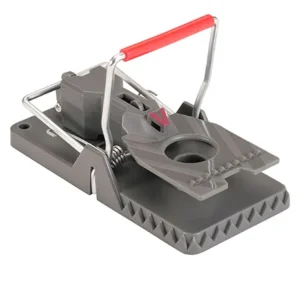
Best Snap Trap

Best Glue Trap

Best Humane Trap
Best DIY Option
- Top 5 Best Mouse Traps Reviewed
- How to Choose the Right Mouse Trap
- Effective Mouse Trap Placement
- Best Baits for Mouse Traps
- DIY Mouse Traps: How to Make Your Own
- Troubleshooting: When Mice Won’t Take the Bait
- Health Risks Associated with Mouse Infestations
- Understanding Different Types of Mouse Traps
- Safe Disposal of Caught Mice
- Prevention: Keeping Mice Out of Your Home
- When to Call a Professional
- Frequently Asked Questions
- Conclusion
Top 5 Best Mouse Traps Reviewed
After extensive research and testing, we’ve identified the best mouse traps of 2025 across different categories. Research shows that professional-grade snap traps have a significantly higher capture rate (53%) compared to standard trigger models (37%). Both types have similar escape rates of 12-14%, but bait stealing occurs much more frequently with standard traps. Here’s a detailed look at our top picks: In addition to our top mouse traps, we’ve also evaluated the best rat traps for 2025 to handle larger infestations effectively. Many consumers prefer models that offer both ease of use and enhanced safety features, ensuring a humane approach to pest control. With an increasing focus on environmental responsibility, some traps are designed to minimize harm to non-target animals while still delivering high capture rates.
Victor M250S Electronic Mouse Trap
Editor's ChoiceHow Does It Work
How to Use
- Insert 4 AA batteries (not included)
- Place a small amount of high-protein bait in the provided cup
- Close the chamber and power on the trap
- Position along walls or in areas with mouse activity
- When the green light blinks, a mouse has been caught
- Turn off, remove the chamber, and dispose without touching or seeing the mouse
- 100% kill rate in laboratory testing
- Can kill up to 100 mice per set of batteries
- No-touch, no-see disposal system
- Built-in safety switch protects children and pets
- Easy to clean and reuse
- More expensive than basic traps
- Requires batteries
- Indoor use only
- Green indicator light might be overlooked
Victor M393SSR Humane Mouse Traps
Best Value PackHow Does It Work
How to Use
- Set the trap with one simple click
- Bait with peanut butter or other high-protein food
- Place along walls where mouse activity has been observed
- After catching a mouse, simply click to release for disposal
- Clean with mild disinfectant and reset as needed
- Economical 6-pack for addressing larger infestations
- Easy one-click set and release mechanism
- No chemicals, safe to use around children and pets
- Reusable design for long-term rodent management
- Large trigger pedal for reliable activation
- Requires handling of dead mice
- May potentially harm pets if triggered accidentally
- Not enclosed, so caught mice are visible
- Needs regular checking and resetting
Tomcat Glue Traps with Eugenol
Best Glue TrapHow Does It Work
How to Use
- Remove the trap from packaging and unfold it
- Place along walls or in corners where mouse activity has been observed
- Optionally add a small amount of bait in the center for enhanced effectiveness
- Check traps regularly and dispose of the entire trap when a mouse is caught
- Replace with new traps as needed
- No setup required - ready to use immediately
- Works in unheated areas thanks to eugenol formulation
- Non-toxic and safe around children and pets
- Can catch multiple mice on a single trap
- Also effective for insects and other small pests
- Considered less humane than other trap types
- Not reusable - must dispose of entire trap
- Can be distressing to see trapped mice still alive
- May pose a minor risk to very small pets
While glue traps are effective, they are considered less humane than other options as mice remain alive when caught and may suffer. If you’re concerned about humane treatment, consider a different trap type. If you do use glue traps, check them frequently and humanely dispatch any trapped mice promptly.
Havahart 1020 Live Animal Two-Door Mouse Cage Trap
Best Humane TrapHow Does It Work
How to Use
- Place bait in the center of the trap (seeds, nuts, or peanut butter work well)
- Set both doors by pulling them up and latching them open
- Position the trap along walls or in areas with mouse activity
- Check the trap at least twice daily to minimize stress for captured mice
- Transport captured mice at least 1-2 miles from your home before release
- Open one door and allow the mouse to exit on its own
- Completely humane - no harm to mice
- Two-door design increases capture chances
- Durable metal construction lasts for years
- Can be used indoors or outdoors
- Safe around children and pets
- Requires frequent checking to prevent animal stress
- Mice must be released far from home or they may return
- More expensive than basic snap traps
- Less practical for large infestations
The Original Rolling Log Bucket Trap
Best DIY OptionHow Does It Work
How to Use
- Mount the Rolling Log device on a 5-gallon bucket rim
- Apply peanut butter or other bait directly to the roller
- For a lethal trap, add 3-4 inches of water to the bucket
- For a humane trap, leave the bucket empty or add bedding material
- Position a ramp leading up to the bucket's edge
- Place the setup in areas with observed mouse activity
- Check regularly, especially if using as a live-catch trap
- Can catch multiple mice without resetting
- Versatile - can be used as either humane or lethal trap
- Cost-effective for large infestations
- Works both indoors and outdoors
- Reusable for years with proper maintenance
- Requires a 5-gallon bucket (purchased separately)
- Takes up more space than smaller traps
- Water method not considered humane by some
- Not suitable around small children due to drowning risk
If using water in your bucket trap, never use antifreeze as it’s extremely toxic to pets and wildlife. If a pet drinks water containing antifreeze, it can cause fatal kidney damage. If you need to prevent water from freezing, use salt instead, or opt for a dry-catch method during cold weather.
How to Choose the Right Mouse Trap
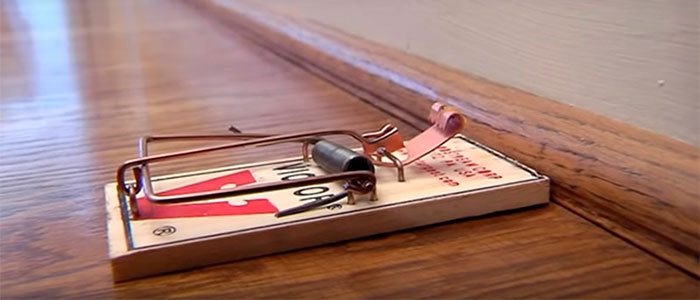
Selecting the best mouse trap for your situation depends on several factors. Consider the following when making your choice:
Infestation Level
For minor problems (1-2 mice), single-catch traps may suffice. For larger infestations, consider multi-catch traps like bucket systems or multiple single-catch traps.
Household Composition
If you have children or pets, prioritize safety with enclosed traps like electronic models or those with safety features to prevent accidental triggering.
Ethical Considerations
If humane treatment is important to you, choose live-catch traps or instant-kill methods like electronic traps that minimize suffering.
Budget
Consider both upfront and ongoing costs. Electronic traps cost more initially and require batteries, while snap traps are cheaper but may need more frequent replacement.
Location
For outdoor areas or unheated spaces, choose weather-resistant options like metal snap traps or glue traps with eugenol. For visible areas, consider more discreet options.
Personal Comfort
If you’re squeamish, select traps with no-see, no-touch disposal methods like electronic traps or enclosed snap traps to minimize contact with dead mice.
Effective Mouse Trap Placement
Even the best mouse trap won’t work if placed incorrectly. Here are tips for optimal trap placement:
Best Baits for Mouse Traps

The right bait can significantly increase your trap’s effectiveness. Here are the best options:
Peanut Butter
The gold standard for mouse bait. Its strong aroma, sticky consistency, and high-fat content make it irresistible to mice. It also forces mice to linger at the trap while trying to eat it, increasing the chance of triggering the trap.
Chocolate
Mice are attracted to sweet, high-calorie foods. Small pieces of chocolate (especially dark chocolate) can be very effective, particularly when mice have become wary of peanut butter.
Seeds and Nuts
Sunflower seeds, pumpkin seeds, and nuts provide proteins and fats that mice naturally seek. These work particularly well in live-catch traps or bucket traps.
Bacon
A small piece of cooked bacon (tied down with string to prevent theft) can be irresistible to mice. The strong aroma attracts mice from a distance.
Sweet Treats
Marshmallows, gumdrops, or other sweet, sticky candies can work well, especially in homes where mice have been eating sugary foods.
When baiting traps, use just a small amount (pea-sized) of bait. Too much bait allows mice to steal some without triggering the trap. Always wear gloves when handling traps and bait to avoid transferring your scent, which can make mice wary.
DIY Mouse Traps: How to Make Your Own

If you’re on a budget or prefer a homemade solution, there are several effective DIY mouse traps you can make with common household items. Here’s how to make a simple yet effective bucket trap:
5-Gallon Bucket Trap with Spinning Can
Materials Needed:
- A 5-gallon bucket
- A coat hanger or stiff wire
- An empty soda can
- A drill with small bit
- Peanut butter or other bait
- A piece of wood for a ramp
- Optional: 3-4 inches of water (for lethal trap)
Instructions:
- Drill two small holes on opposite sides near the top of the bucket, just below the rim.
- Drill a hole through each end of the soda can.
- Straighten the coat hanger and thread it through one hole in the bucket, through both holes in the can, and out the opposite hole in the bucket.
- Bend the ends of the wire outside the bucket to prevent it from sliding out.
- Apply peanut butter to the outside of the can.
- Position a ramp from the floor up to the edge of the bucket.
- For a lethal trap, add 3-4 inches of water to the bottom of the bucket. For a humane trap, leave it empty.
Mice climb the ramp and attempt to reach the bait on the can. When they step onto the can, it spins, dropping them into the bucket. If water is present, they will eventually drown. If the bucket is dry, they’ll be contained until you check the trap and release them elsewhere.
Troubleshooting: When Mice Won’t Take the Bait
Sometimes mice seem to outsmart even the best traps. If your mouse traps aren’t working, try these troubleshooting tips:
If you’ve been unsuccessful at trapping mice after several weeks of trying different approaches, or if you’re dealing with a large infestation, it may be time to call a professional pest control service. They have access to additional tools and strategies that can effectively address persistent mouse problems. Moreover, while waiting for professional help, you can explore the best homemade remedies for mice to deter them from your space. These solutions may include natural repellents, like peppermint oil, or even placing traps with appealing bait. Implementing these methods can provide temporary relief and complement the efforts of your pest control specialist.
Health Risks Associated with Mouse Infestations
Mice aren’t just a nuisance; they pose significant health risks to you and your family. Understanding these risks emphasizes why effective mouse control is so important.
Hantavirus Pulmonary Syndrome
Mice, particularly deer mice, can carry hantavirus, which can cause a potentially fatal respiratory disease. People become infected primarily by breathing in air contaminated with virus particles from mouse droppings, urine, or saliva. The CDC warns that proper cleaning of mouse-infested areas requires special precautions to avoid stirring up dust.
Salmonellosis
Mice can contaminate food and food preparation surfaces with Salmonella bacteria through their droppings. This can lead to salmonellosis, which causes symptoms like diarrhea, fever, and abdominal cramps. Even if you don’t see mice, their invisible droppings on countertops and in pantries can spread this bacteria.
Allergies and Asthma
Mouse allergens are a major trigger for allergies and asthma, especially in children. These allergens come from mouse urine, dander, and saliva, and can persist in house dust for months. Studies have shown that mouse allergens are present in 82% of U.S. homes, with higher concentrations in urban dwellings.
Parasites and Vector-Borne Diseases
Mice can carry fleas, ticks, and mites that may transmit diseases like Lyme disease and plague. Even after eliminating mice, these parasites may remain in your home seeking new hosts, including humans and pets. This makes comprehensive pest management essential.
Lymphocytic Choriomeningitis (LCM)
House mice can carry the virus that causes LCM, which can result in neurological complications and, while rare, can be particularly dangerous to pregnant women as it may cause congenital defects in the fetus. Infection occurs through exposure to fresh mouse droppings, urine, saliva, or nesting materials.
When cleaning areas with mouse droppings, never sweep or vacuum, as this can aerosolize infectious particles. Instead, spray the area with a disinfectant or bleach solution (1 part bleach to 10 parts water), let it soak for 5 minutes, then wipe up with paper towels while wearing disposable gloves. Dispose of cleaning materials in sealed plastic bags. The CDC provides detailed guidelines for safely cleaning rodent-infested areas.
These health risks highlight why prompt and effective mouse control is not just about protecting your property, but also safeguarding your family’s health. The Centers for Disease Control and Prevention (CDC) emphasizes that rodent control through trapping and exclusion is the primary strategy for preventing rodent-borne diseases.
According to the Environmental Protection Agency (EPA), a mouse infestation should be considered a potential public health concern requiring immediate attention. The EPA recommends sealing holes, removing potential nesting sites, and eliminating food and water sources to prevent rodent infestations. Tackling the problem quickly helps minimize exposure to disease-causing pathogens and allergens that mice can introduce into your home environment.
Understanding Different Types of Mouse Traps
Before diving into specific products, it’s important to understand the different types of mouse traps available on the market. Each type has its own advantages and is suited to different situations, preferences, and levels of infestation.
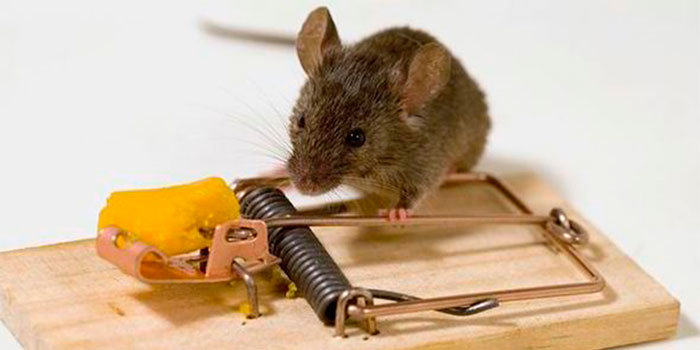
Electronic Mouse Traps
These high-tech traps deliver a quick, lethal electric shock to mice that enter. They’re generally considered humane because death is instantaneous. Most electronic traps hide the dead mouse from view and offer a no-touch disposal method, making them ideal for squeamish users.
Snap Traps
The classic mouse trap design, snap traps use a spring-loaded bar or jaw that snaps shut when triggered. Modern versions are easier to set and more effective than older designs. They’re affordable and efficient but require handling of the dead mouse during disposal.
Glue Traps
These traps use extremely sticky adhesive to capture mice. They’re inexpensive and easy to use, but are considered less humane as mice remain alive and may suffer before dying. Some newer models include additives like eugenol to work better in colder temperatures.
Live-Catch Traps
For those who prefer not to kill mice, these traps capture rodents alive for later release. They range from simple plastic boxes to more elaborate cage designs. They require frequent checking to prevent captured mice from suffering from hunger or stress.
DIY/Bucket Traps
Homemade traps often use buckets and can be designed to either catch mice alive or drown them. They’re economical and can catch multiple mice without needing to be reset, making them good for larger infestations.
Safe Disposal of Caught Mice
Proper disposal of trapped mice is important for hygiene and preventing the spread of diseases. Here’s how to handle disposal safely:
For Dead Mice
- Always wear disposable gloves when handling dead mice or traps that have caught mice.
- Place the dead mouse in a sealed plastic bag.
- Place the bag in another sealed bag for additional protection.
- Dispose of the double-bagged mouse in an outdoor trash can with a secure lid.
- Clean and disinfect the area where the mouse was caught with a bleach solution or commercial disinfectant.
- Wash your hands thoroughly after removing gloves.
For Live-Caught Mice
- Wear gloves to protect yourself from potential bites or scratches.
- Transport the trap at least 1-2 miles from your home before releasing the mouse.
- Choose a release site with natural cover and food sources, away from other homes.
- Open the trap and allow the mouse to exit on its own – avoid handling the mouse directly.
- Clean and disinfect the trap before reusing it.
Mice can carry various diseases, including hantavirus, salmonellosis, and leptospirosis. Always use gloves when handling traps or mice, and thoroughly wash hands and disinfect surfaces afterward. Never sweep or vacuum mouse droppings, as this can aerosolize infectious particles.
Prevention: Keeping Mice Out of Your Home
While trapping is effective for existing mouse problems, prevention is the best long-term strategy. Here’s how to make your home less attractive to mice: Seal up any cracks and gaps around doors, windows, and foundations to prevent mice from gaining entry. Additionally, consider using some of the best mouse repellents for home, such as essential oils or natural deterrents, to further fend off unwanted visitors. Keeping food stored in airtight containers can also minimize the chances of attracting mice into your living space. Seal any cracks and crevices in your walls, floors, and around windows to prevent entry points for mice. Additionally, keep food stored in airtight containers and promptly clean up spills and crumbs to diminish food sources. For those currently dealing with an infestation, searching for effective methods on how to eliminate mice in your home can provide immediate relief. Seal any cracks and gaps in your walls, floors, and around windows and doors, as these are common entry points for mice. Additionally, keep food stored in airtight containers and maintain a clean living space to minimize nesting opportunities. By following these steps, you will not only deter future infestations but also learn how to eliminate mice effectively. Sealing off entry points such as cracks, gaps, and holes around doors and windows is crucial in keeping mice out. Additionally, maintaining a clean environment by storing food in airtight containers and promptly cleaning up any spills or crumbs can further deter these pests. Employing some of the best methods to repel mice, like using natural repellents such as peppermint oil, can enhance your prevention efforts. Seal any cracks or openings in your home’s exterior, as even the smallest gaps can provide entry points for these pests. Additionally, keep food stored in airtight containers and maintain clean, clutter-free spaces to discourage mice from taking residence. For those looking for methods on how to eliminate field mice effectively, consider using repellents or natural deterrents alongside physical barriers.
Seal Entry Points
Mice can squeeze through holes as small as 1/4 inch. Inspect your home’s exterior and seal any gaps or cracks with steel wool, caulk, or hardware cloth.
Maintain Cleanliness
Clean up food spills promptly, store food in airtight containers, and take out garbage regularly. Don’t leave pet food out overnight.
Reduce Outdoor Attractants
Keep outdoor grills clean, maintain distance between wood piles and your home, and trim vegetation away from the foundation.
Proper Storage
Store items in plastic bins rather than cardboard boxes, which mice can chew through. Keep storage areas organized and clutter-free.
Natural Predators
Cats can be effective deterrents, even if they don’t actively hunt mice. The scent of a cat can discourage mice from taking up residence.
When to Call a Professional
While DIY mouse control is often effective, there are situations where professional help is warranted:
- Large infestations that don’t respond to trapping efforts
- Recurring mouse problems despite prevention measures
- Mice in hard-to-access areas like wall voids or HVAC systems
- When mice have caused structural damage or contaminated food storage areas
- If anyone in the household has respiratory issues that could be worsened by mouse allergens
- When you’re uncertain if you’re dealing with mice or rats (which require different control strategies)
Professional pest control services can provide integrated pest management approaches that combine trapping, exclusion methods, and targeted treatments to effectively eliminate mice and prevent their return.
Frequently Asked Questions
How many mouse traps should I use?
For effective control, use multiple traps – a good rule of thumb is one trap for every 5-10 feet along walls where you’ve seen mouse activity. For the average room, this might mean 2-4 traps. Remember that for every mouse you see, there may be several more hiding.
How long does it take for a mouse trap to work?
Mouse traps can catch mice within hours of being set if placed in areas with high mouse activity. However, it may take several days for mice to approach newly placed traps, especially if the mice are trap-shy. Persistence is key – leave traps in place and check them daily.
Do mice learn to avoid traps?
Yes, mice can become “trap-shy” after seeing other mice caught or having a close call themselves. This is why using multiple types of traps and changing locations can be more effective than relying on a single trap type.
Where should I place mouse traps?
Place traps along walls, in corners, and near food sources where you’ve seen signs of mouse activity (droppings, gnaw marks, etc.). The trigger end should be facing the wall, as mice tend to travel along walls rather than in open spaces.
Are electronic mouse traps worth the extra cost?
For many users, yes. Electronic traps offer several advantages: they’re more humane (providing a quick kill), more hygienic (no-touch disposal), safer around children and pets (enclosed design), and often more effective than traditional traps. The higher upfront cost is often offset by their reusability and effectiveness.
How do I know if I have mice or rats?
Mice and rats leave different signs: mouse droppings are small (1/4 inch) and pointed, while rat droppings are larger (3/4 inch) and capsule-shaped. Mice make scratching sounds, while rats make louder thumping or scurrying noises. Mice can squeeze through 1/4-inch gaps, while rats need at least 1/2-inch openings. Different traps are needed for rats due to their larger size.
Conclusion
Dealing with mice in your home can be frustrating, but with the right traps and proper placement, you can effectively control and eliminate these unwanted guests. Whether you opt for the high-tech approach of electronic traps, the traditional reliability of snap traps, or the humane option of live-catch traps, consistency and patience are key to success.
Remember that trapping alone is only part of the solution. For long-term mouse control, combine trapping with prevention measures such as sealing entry points, maintaining cleanliness, and eliminating food sources. By taking a comprehensive approach to mouse control, you can keep your home rodent-free and protect your family’s health and property.
Each home and infestation is unique, so don’t be afraid to experiment with different trap types and strategies until you find what works best for your specific situation. With persistence and the information provided in this guide, you’ll be well-equipped to tackle your mouse problem effectively.
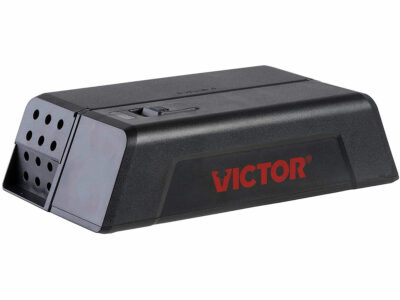
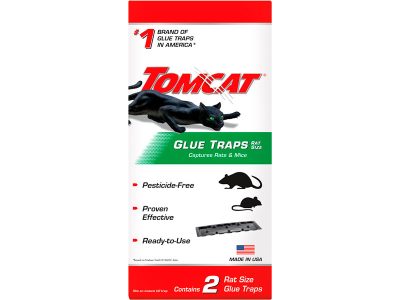
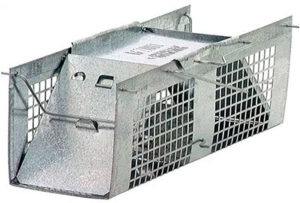
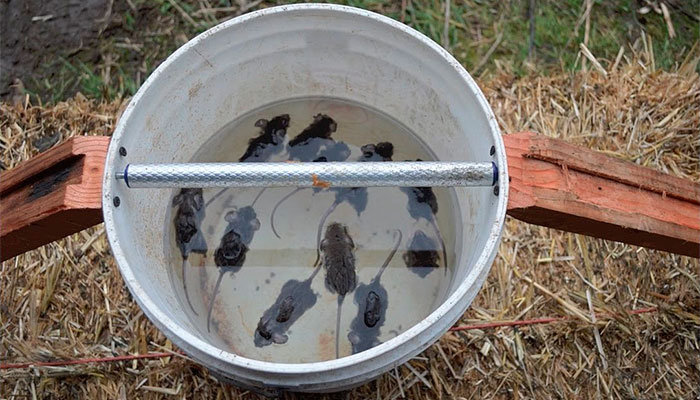
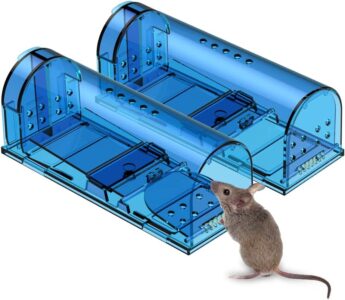

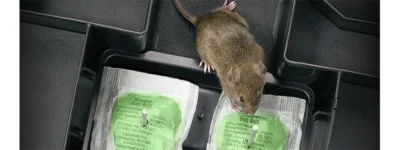

The method you broke down complex subjects right into smaller sized, bite-sized items was exceptionally useful.
yes.